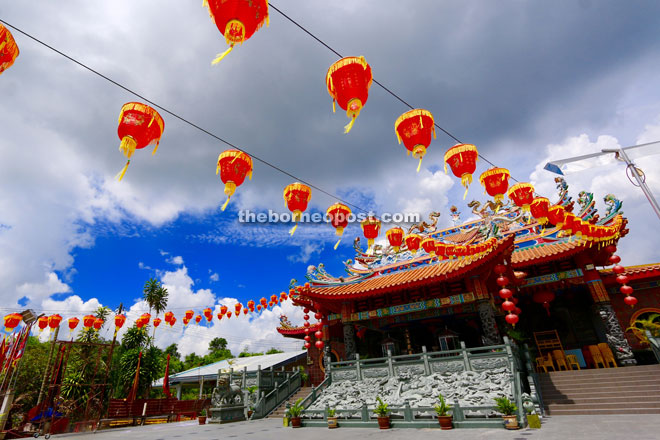
The new Er Par Wang temple costing over RM5 million.
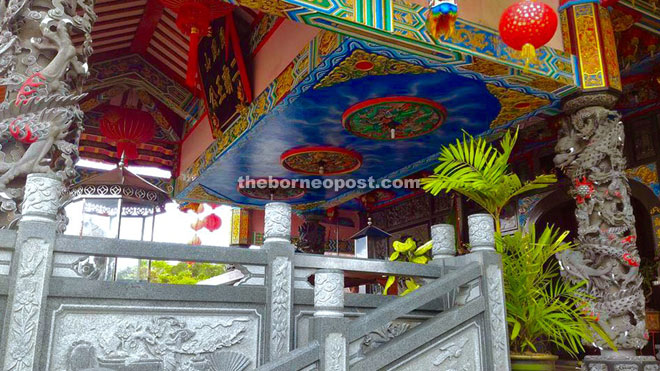
The front corridor of the temple.
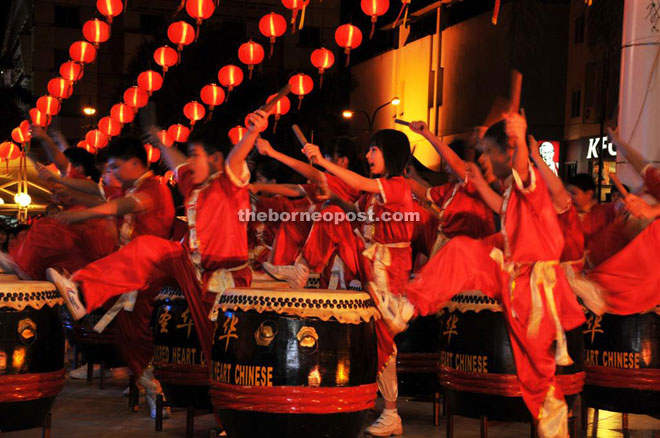
A cultural troupe beating traditional drums to celebrate the 24 seasons in the lunar calendar.
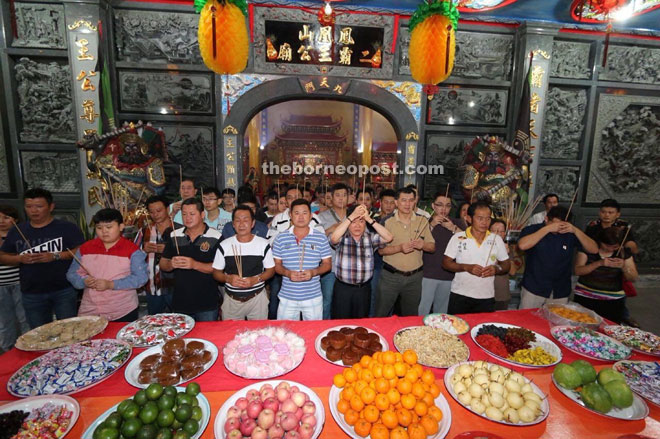
Leaders of the temple making offerings of burnt incense. Yeo is fifth from right, front row.
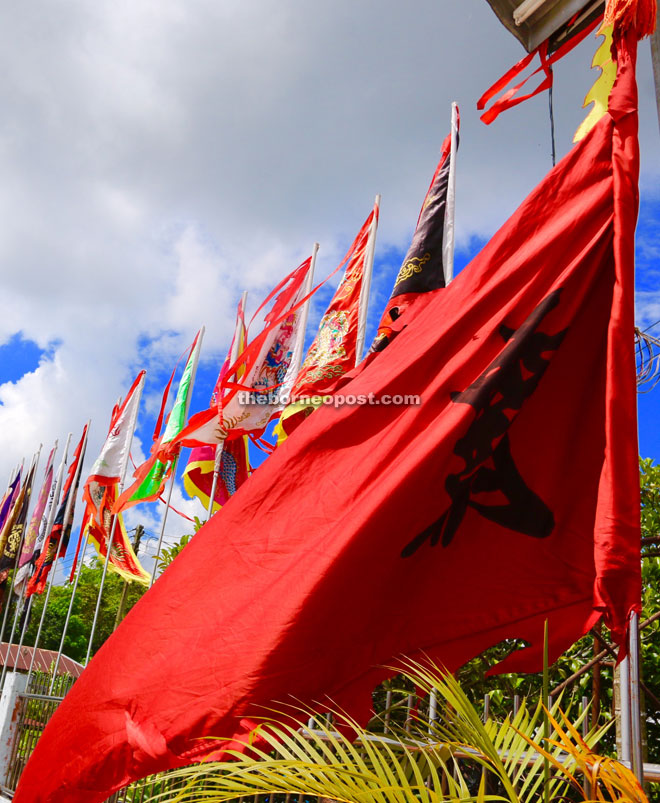
A temple flag bearing the Chinese character of ‘ba’ or ‘Par’, meaning supremacy.
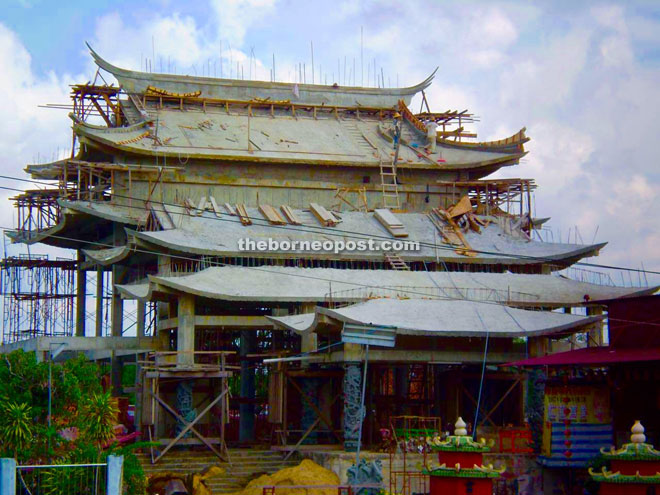
The construction of the temple in progress. It was completed in 2012.
SIBU: A grand procession will be held this Friday night from Sibu Town Square in conjunction with the opening of the new Er Par Wang Temple in Deshon Road.
Led by temple committee chairman Yeo Keng Teck and organising chairman Ling How Kang, the procession will be a colourful affair, with over 80 contingents consisting mostly temple delegates from throughout the country taking part.
Other participants include lion and dragon dance groups that include a chin gay troupe from Bintulu and a troupe from the Sheng Zhi Shen (Guan Gong) Temple.
Yeo said: “The grand procession is part of the three-day celebration to mark the opening of the new temple costing over RM5 million. More than 500 delegates from various temples in Peninsular Malaysia are converging here. This does not include temple delegates from East Malaysia.”
He said the Friday event would be the second grand procession after their previous one in July 2012, when they launched the soft opening of the new temple and the placement of 43 new deity statues in the new house of worship.
The construction of the new Er Par Wang temple, built to replace the old one at the same site, began in 2008 and was completed in 2012.
The temple committee has since done touch-ups to the cultural art, and after the grand procession this Friday, the new temple will be opened on Sunday morning.
“The procession route includes a walk through Bujang Stutong Road at the town square, Kampung Nyabor Road, Ramin Way, Wong Nai Siong Road, another section of Kampung Nyabor Road before turning into Central Road, Workshop Road, Khoo Peng Loong Road, Temple Street, Island Road and back to the town square,” Yeo added.
After the procession, he said they will celebrate the birthday of Er Par Wang deity on Saturday morning at the temple before hosting a welcoming dinner that night.
And on Sunday night, he continued, they would host a banquet to celebrate the official opening of the temple.
According to legend, Er Par Wang is the second of the nine sons of deity Dou Mu. The nine sons are collectively called ‘Kow Ong Yah’ in Hokkien (the Nine Princes).
Worshiping Dou Mu and his nine princes is common among the Hokkien clan worldwide.
As there is a large Hokkien population in Malaysia, there are 60 Kow Ong Yah temples across the land.
The new Er Par Wang temple at Deshon Road has become one of the top four Chinese temples in Sibu.
The other three are Tua Pek Kong Temple built 150 years ago by the first Chinese settlers, Jee Sai Pek Temple in Bukit Assek Road and Jade Dragon Mountain Temple in Oya Road.
These four temples have rich Chinese cultural heritage dating back thousands of years and have been recommended as must-visit destinations for foreign tourists.
The history of Er Par Wang Temple in Sibu dates back to 1969 when it was first set up on an upper-floor of a shop house at Lane 9, Lanang Road.
“In 1972, the temple’s building committee was formed, and land at the present temple site in Deshon Road was donated by a worshipper,” Yeo recalled.
He said the first temple at Deshon Road was built in 1982 and completed the next year.
Yeo said the new Er Par Wang temple was built because they needed a bigger temple as the number of devotees had swelled the past three decades.
